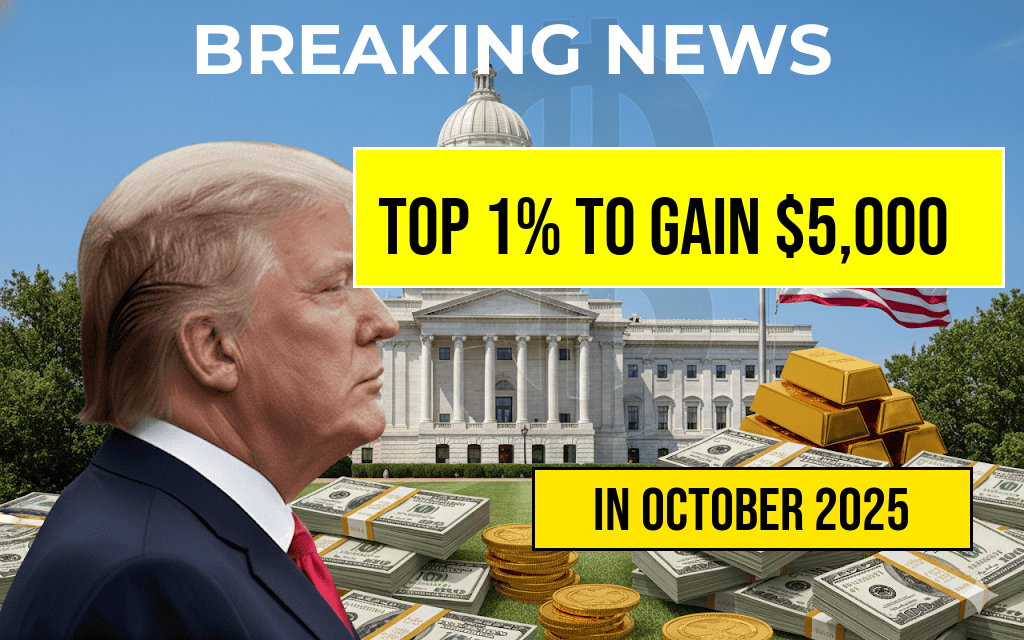The recent overhaul of the U.S. tax code has brought notable financial benefits for the country’s wealthiest households. According to preliminary analyses, the top 1% of Americans are projected to see an average net income increase of approximately $5,000 following the implementation of new tax reforms. This shift underscores ongoing debates about income inequality and the distribution of fiscal benefits across different economic strata. While policymakers tout the reforms as a means to stimulate economic growth and incentivize investment, critics argue they disproportionately favor the affluent, widening existing disparities. The changes, which include adjustments to tax brackets, deductions, and credits, have sparked widespread discussion among economists, policymakers, and the public about their long-term implications for the U.S. economy and social fabric.
Understanding the Tax Reforms and Their Impact
Key Elements of the New Tax Legislation
- Tax Bracket Adjustments: The reforms have increased the income thresholds for higher tax brackets, effectively reducing the tax rates for top earners.
- Enhanced Deductions and Credits: Certain deductions have been broadened or made more accessible, benefiting those with substantial incomes.
- Capital Gains and Investment Tax Changes: Modifications to capital gains taxes tend to favor wealthy investors, encouraging asset accumulation.
Projected Benefits for the Wealthiest
| Income Group | Average Net Income Change | Percentage Increase |
|---|---|---|
| Top 1% | $5,000 | 2.1% |
| Middle 20% | $1,200 | 0.3% |
| Bottom 20% | Negligible / Slight decrease | -0.1% |
Economic and Social Implications
Growth and Investment Stimulus
Economists argue that the tax cuts for high earners could foster increased investment in businesses and innovation. “Lower tax rates on capital gains and dividends may encourage wealth accumulation and entrepreneurship,” notes a recent report by the Wikipedia Economics entry. This could, in theory, drive job creation and economic expansion, though the magnitude of these effects remains debated among experts.
Concerns About Income Inequality
Critics emphasize that the benefits are unevenly distributed, with the top 1% positioned to gain significantly more than lower-income groups. “When the wealthiest see substantial tax savings while middle and lower-income households experience minimal or no benefit, the gap in economic power continues to widen,” argues Dr. Lisa Simmons, an economist at the Forbes Business Council. This disparity raises questions about equitable growth and the long-term sustainability of current fiscal policies.
Government Revenue and Public Services
The projected decrease in tax revenue from high-income brackets could impact federal funding for public services. Estimates suggest that the reforms might reduce federal income by hundreds of billions of dollars over the next decade, potentially leading to cuts in programs such as healthcare, education, and infrastructure development. Policymakers are divided over whether the economic benefits justify these trade-offs.
Broader Context and Future Outlook
Historical Trends in Tax Policy
Historically, tax reforms favoring the wealthy have been associated with periods of economic growth but also increased income inequality. As detailed in the Wikipedia page on U.S. tax policy, shifts in tax code often reflect political priorities and ideological divides.
Potential for Policy Adjustments
As the reforms take effect, lawmakers remain under pressure to evaluate their long-term impacts. Some advocates push for closing loopholes and implementing surtaxes on ultra-high-net-worth individuals to balance fiscal responsibility with social equity.
Conclusion
The anticipated $5,000 net income boost for the top 1% highlights ongoing debates about tax policy’s role in shaping economic outcomes. While high earners may see immediate gains, the broader societal and fiscal implications of these reforms continue to unfold. As discussions persist around fairness, economic growth, and government revenue, the next few years will reveal whether these policies achieve their intended objectives or exacerbate existing inequalities.
Frequently Asked Questions
What is the main benefit for the top 1% of Americans from the recent tax reforms?
The top 1% is expected to see an average increase of $5,000 in net income due to the tax reforms.
How will the tax reforms impact the wealthiest Americans specifically?
The tax reforms are designed to provide significant financial gains for the top 1%, primarily through lower tax rates and increased net income.
Are there any changes in tax policies that benefit the top 1% more than other income groups?
Yes, the tax reforms include policies like reduced tax rates on high incomes and capital gains, which disproportionately benefit the top 1%.
What is the projected net income increase for the top 1% following the reforms?
The top 1% is projected to gain approximately $5,000 in net income on average after the implementation of the tax reforms.
Will the tax reforms affect the tax burden of middle and lower-income Americans?
While the tax reforms mainly benefit the top 1%, they may have limited or different effects on middle and lower-income Americans, with some concerns about increased tax burdens elsewhere.

Leave a Reply